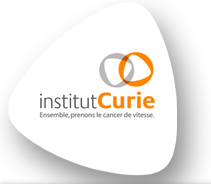Neurological hospitalisations in childhood cancer survivors treated before 2001: findings from the French Childhood Cancer Survivor Study cohort
Résumé
Childhood cancer survivors (CCS) have an increased risk of developing late chronic diseases, which can be influenced by the cancer type and its treatment. These chronic diseases can be severe and disabling, typically emerging years to decades after treatment. These deficits negatively impact quality of life, intelligence quotient, and memory. This study investigated how much the cancer type and treatment could affect the neurological hospitalisations in the French Childhood Cancer Survivors Study (FCCSS). Methods: We included 5579 childhood cancer survivors (CCS), diagnosed with solid tumours or lymphoma between 1945 and 2000, treated before 2001 and below the age of 21 years at initial treatment. The follow-up period was from 2006 to 2018. Hospitalisation data were obtained by linkage with the National Health Data System. We calculated the relative hospitalisation rate (RHRs) and absolute excess rate (AERs). Multivariable analyses were conducted using a Generalized Linear Model (GLM) with a Poisson distribution to estimate the association between neurological hospitalisation and patient characteristics. The expected number of hospitalisations served as an offset to compare the risk for FCCSS survivors with that of the reference population. Risk estimates were reported as relative risk (RR) with 95% confidence intervals. Results: The hospitalisation rate for CCS was 114.2 per 10,000 person-years (PY), compared to 48.4 in the reference population. The highest hospitalisation rates were observed for epilepsy (AER = 27.1 per 10000 PY, 95%CI: 23.5u201331.2 and RHR = 5.1, 95%CI 4.4u20135.7). In multivariable analyses, central nervous system (CNS) tumours survivors had the highest relative risk (RR) of hospitalisation (RR = 9.4, 95%CI: 6.7u201313.1) followed by neuroblastoma survivors (RR = 2.5, 95%CI: 1.7u20133.7). In the whole population, survivors who received radiation to the head and neck had a significantly higher risk of hospitalisation (RR = 3.9, 95%CI: 3.3u20134.7) compared to those who did not receive radiotherapy. Conclusions: Head and neck irradiation was identified as a strong risk factor for hospitalisation. This underlines the importance of implementing specific neurologic surveillance programs for at-risk individuals.
| Origine | Fichiers éditeurs autorisés sur une archive ouverte |
|---|---|
| licence |




